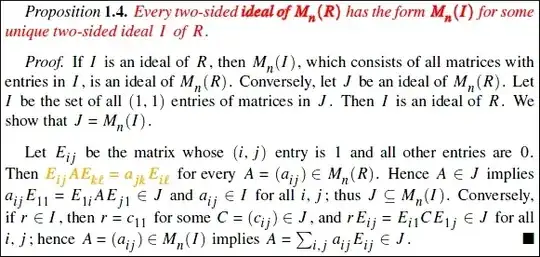Suppose that you have an ideal $\mathfrak{I}$ which contains a matrix with a nonzero entry $a_{ij}$. Multiplying by the matrix that has $0$'s everywhere except a $1$ in entry $(i,i)$, kill all rows except the $i$th row; multiplying by a suitable matrices on the right, kill all columns except the $j$th column; now you have a matrix, necessarily in $\mathfrak{I}$, which contains exactly one nonzero entry, namely $a_{ij}$ in position $(i,j)$.
Now show that $\mathfrak{I}$ must contain all matrices in $M_{n\times n}(k)$. This will show that a $2$-sided ideal consists either of only the $0$ matrix, or must be equal to the entire ring.
Added. Now that you have a matrix that has a single nonzero entry, can you get a matrix that has a single nonzero entry on whatever coordinate you specify, and such that this nonzero entry is whatever element of $k$ you want, by multiplying this matrix (on either left, or right, or both) by suitable elementary matrices? Will they all be in $\mathfrak{I}$?
And...
$$\left(\begin{array}{cc}
a&b\\
c&d
\end{array}\right) = \left(\begin{array}{cc}
a & 0\\
0 & 0
\end{array}\right) + \cdots$$
